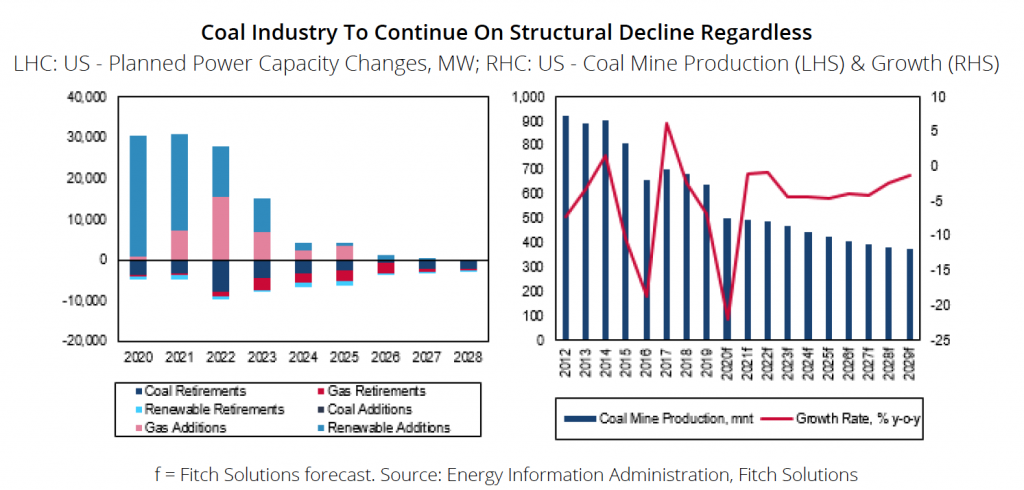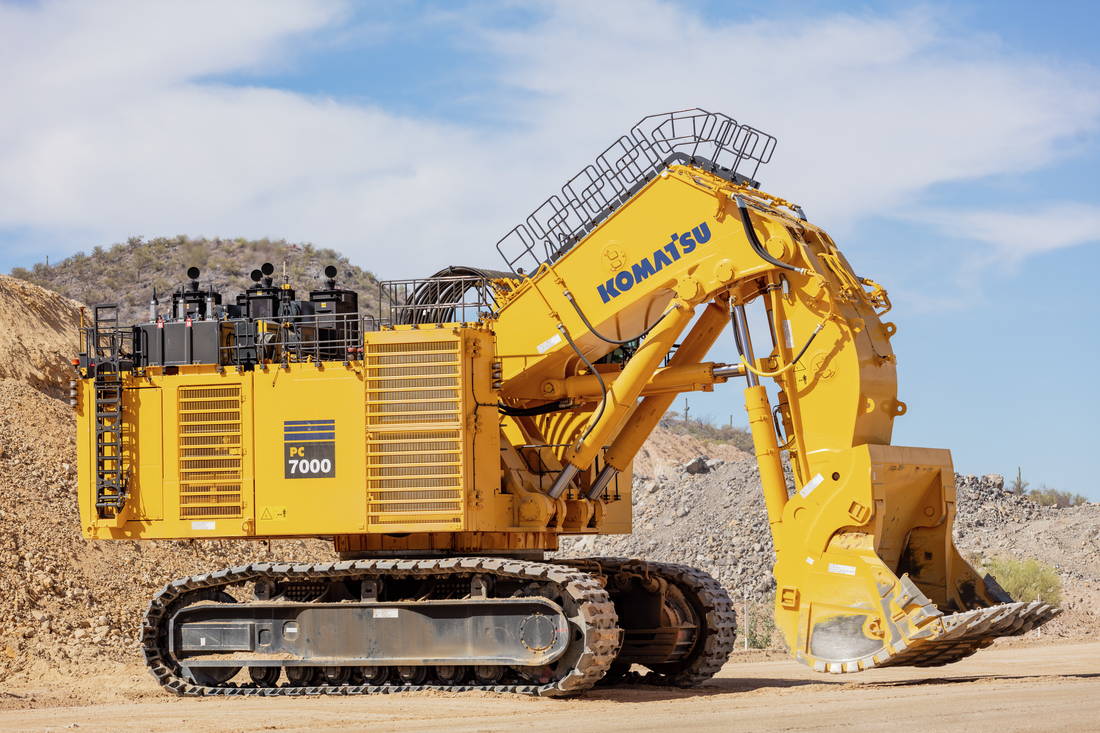Renewables may see a boost under a Biden presidency – report
A report published by Fitch Solutions Country Risk states that under a Joe Biden presidency, the United States is expected to see an acceleration in renewables development and an effort to reverse the loosening of emission restrictions made by the Donald Trump administration.
In the market analyst’s view, the Democratic nominee has a 70% probability of winning the November 3 election. Thus, the firm’s Country Risk team decided to evaluate a few key aspects of the mining and metals sector that could be impacted by such an outcome.
“A Biden presidency will likely accelerate the decline of coal production in the US as his policy platform moves the country towards other sources of power generation,” the report reads.
According to Fitch, the retirement of coal-fired power plants has left fewer and fewer options to which domestic producers could sell thermal coal. Additionally, export opportunities remain bleak due to US coal being less competitive compared with closer producers in countries such as Australia for Asian buyers.

“Over the past four years, Trump has pledged to revive the coal industry with efforts mainly focused on loosening restrictions on coal-fired power plants to improve profitability and allow for stable demand for thermal coal,” Fitch says.
“However, these measures have fallen short of preventing coal-fired power plant retirements as market dynamics still kept other power generation options more attractive. Ultimately, the retirements have led to the coal sector continuing to see output decline and coal mining companies file for bankruptcy over Trump’s first term.”
Although Biden is not making promises regarding a resurgence of coal, Fitch highlights the fact that his platform outlines plans for greater certainty regarding promised benefits to coal miners as the country transitions away from the fossil fuel. In particular, he has mentioned increasing coal companies’ payments to the Black Lung benefits program and securing the pensions of coal workers.
“Whether this can be done through an executive order remains unclear, but should it need congressional legislation to be made a requirement, we would expect it to only be possible under a Democratic-controlled Senate,” the analysis reads.
“Overall, it does present further downside risks to the contraction in coal output should the increase in compliance costs become too burdensome for financially strained miners to continue operating.”
Beyond coal
Fitch’s report also looks at how the rest of the mining industry may fare if Joe Biden were to become US president. The analyst sees downside risks to production growth forecasts in the long run.
“Given the Obama administration’s previous stance, in which Biden served as vice president, and Biden’s current policy platform which calls for protecting America’s natural treasures, we see scope for project development to slow as the Biden administration would more heavily scrutinize granting environmental permits on federal lands.”
As an example of the Obama policies, Fitch brings back the case of Chilean-miner Antofagasta (LON: ANTO) who saw the renewal of two of its leases for the Twin Metals project in Minnesota blocked in 2016 on the back of environmental concerns potentially disrupting the local economy.
The project is located near the Boundary Waters Canoe Area, a tourism site that gathers roughly 250,000 people each year. Despite this, in 2019, the Trump administration reversed the decision and the company was able to receive a 10-year lease renewal.
Similar situations, Fitch says, could undermine long-term growth should they make projects less attractive or unable to progress.
Legislation and taxes
The market analyst also forecasts Democrats taking a majority in the Senate, although by a small margin. If this is the case, more moderate members of the caucus may gain significant influence over presented policies. This scenario could mean that polices that lack a two-thirds majority could be held up by opposition senators.
“This essentially means that several Republican senators would also need to agree with any major clean energy funding, climate-related emissions or clean energy target. Given these hurdles, we expect that policy implementation will be primarily through the executive branch rather than through legislative action, at least through the next two years until congressional elections,” the report states.
Should a renewables infrastructure bill be passed, however, Fitch believes the metals consumption forecasts should see an upward trend. This is particularly the case as Biden’s platform includes a $2-trillion investment in this area over his first four years.
Should a renewables infrastructure bill be passed, the metals consumption forecasts should see an upward trend
“While we see a plan of this scale as ambitious and unlikely to be passed, a less ambitious version may have a greater chance of coming to fruition. Should this happen, we would expect to see greater domestic demand for key infrastructure/power-related metals such as steel and copper.”
At the same time, the market analyst notes there is potential for higher taxes and stricter disclosure requirements based on a more stringent environmental policy.
Miners are also likely to see an increase in costs as Biden mentioned modifying royalties to account for climate costs but was not specific on how much or if it would only pertain to oil and gas operations.
Beyond the mining sector, the presidential nominee has also indicated a possible corporate tax rate hike from 21% to 28%, as well a raise on the minimum tax on foreign profits from 10.5% to 21%.
“On the latter, his platform mentions increasing requirements for public firms to disclose climate risks and the greenhouse gas emissions in their operations and supply chains,” Fitch says. “While this would increase the burden on firms to gather and report on this area, large mining companies already release sustainability reports in some form, which may make this initiative moot for miners depending on how strict the disclosure requirements are.”
{{ commodity.name }}
{{ post.title }}
{{ post.date }}

Comments